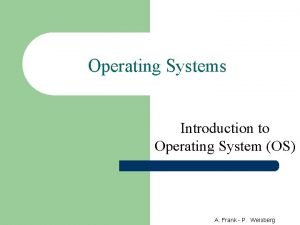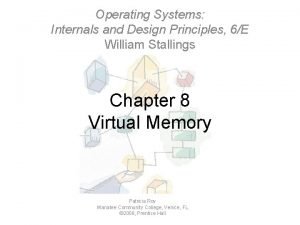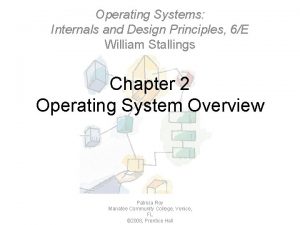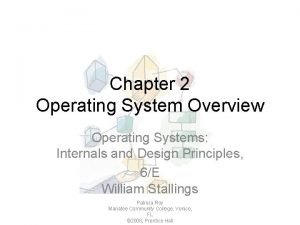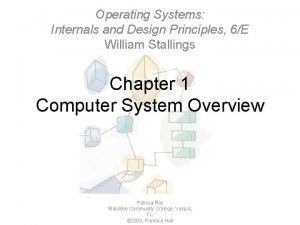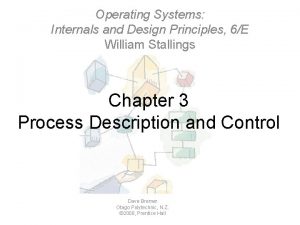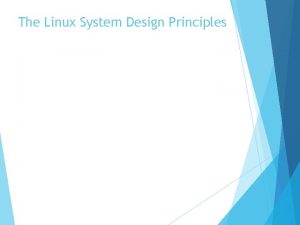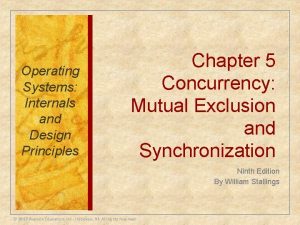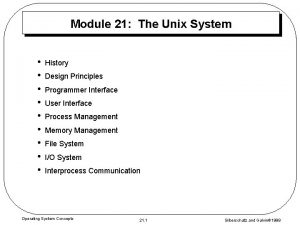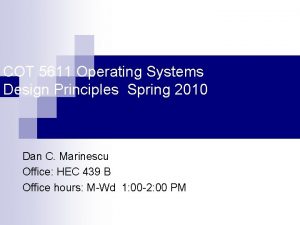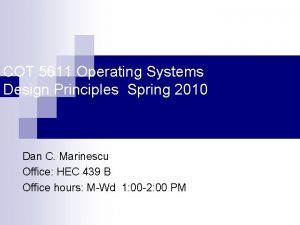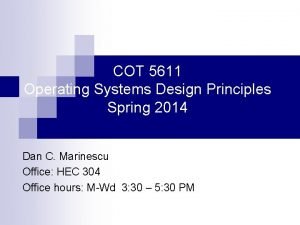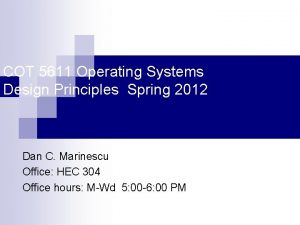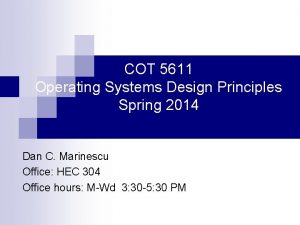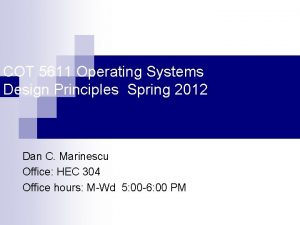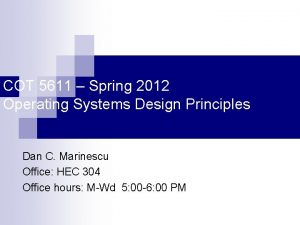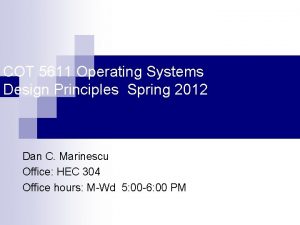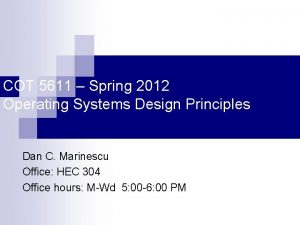COT 5611 Operating Systems Design Principles Spring 2010











- Slides: 11

COT 5611 Operating Systems Design Principles Spring 2010 Dan C. Marinescu Office: HEC 439 B Office hours: M-Wd 1: 00 -2: 00 PM

Man-made systems n Basic requirements for man-made systems: Functionality ¨ Performance ¨ Cost ¨ n n 2 All systems are physical the laws of physics governing the functioning of any system must be well understood. Physical resources are limited. Lecture 1

Complex systems n n n 3 Large number of components Large number of interconnections Many irregularities Long description For man-made systems: a team of designers, implementers, and maintainers. Lecture 1

Issues faced by the designer of a complex system n n 4 Emerging Properties Propagation of effects Incommensurate scaling Tradeoffs Lecture 1

Emerging properties n n 5 A characteristic of complex systems properties that are not evident in the individual components but show up when the components interact with one another. Example: you have several electronic components which radiate electromagnetic energy; if they are too close to one another their function are affected. Lecture 1

How the nature deals with complexity n n 6 For biological systems: symmetry, construction of complex biological structures from building blocks. Self-organization though difficult to define, its intuitive meaning is reflected in the observation made by Alan Turing that ``global order can arise from local interactions'' Scale-free systems. Each component interacts directly only with a small number of other components. Man-made systems to imitate nature!! Lecture 1

Scale-free systems n n The scale-free organization can be best explained in terms of the network model of the system, a random graph with vertices representing the entities and the links representing the relationships among them. In a scale-free organization, the probability P(m) that a vertex interacts with m other vertices decays as a power law: with d a positive real number, regardless of the type and function of the system, the identity of its constituents, and the relationships between them. Lecture 1 7

Examples of self-organization n The collaborative graph of movie actors where links are present if two actors were ever cast in the same movie; in this case d=2. n The power grid of the Western US has some 5, 000 vertices representing power generating stations; in this case d=4. n The World Wide Web, d=2. 1. This means that the probability that m pages point to one page is P(m) = m-2. 1 n The citation of scientific papers d=3. 8 Lecture 1

Propagation of effects n In a complex system: Changes of one component affect many other components. Example, changing the size of the tire of a car. ¨ A problem affecting one component propagates to others. For example, the collapse of the housing industry in the Us affected the economy of virtually all countries in the world. ¨ 9 Lecture 1

Incommensurate scaling n Not all components of a complex system follow the same scaling rules. Examples: The pyramids ¨ The tankers ¨ n 10 The power dissipation increases as (clock rate)3. If you double the clock rate, then the power dissipation increases by a factor of 8 so you need a heat removal system 8 times more powerful. Lecture 1

Trade-offs n n Many tradeoffs are involved in the design of any system Examples: a network switch what should be done in hardware and what should be done in software ¨ a hybrid car with a gas and an electric engine how powerful should the gas engine be ¨ a spam filter where to set the threshold ¨ 11 Lecture 1
 Clausplein 6 5611 xp eindhoven
Clausplein 6 5611 xp eindhoven Operating systems: internals and design principles
Operating systems: internals and design principles Slidetodoc.com
Slidetodoc.com Operating systems: internals and design principles
Operating systems: internals and design principles Operating systems: internals and design principles
Operating systems: internals and design principles Operating systems: internals and design principles
Operating systems: internals and design principles Operating systems internals and design principles
Operating systems internals and design principles Operating system internals and design principles
Operating system internals and design principles Operating system design principles
Operating system design principles Operating system internals and design principles
Operating system internals and design principles Design principles of unix operating system
Design principles of unix operating system What are the design issues of distributed operating system
What are the design issues of distributed operating system


